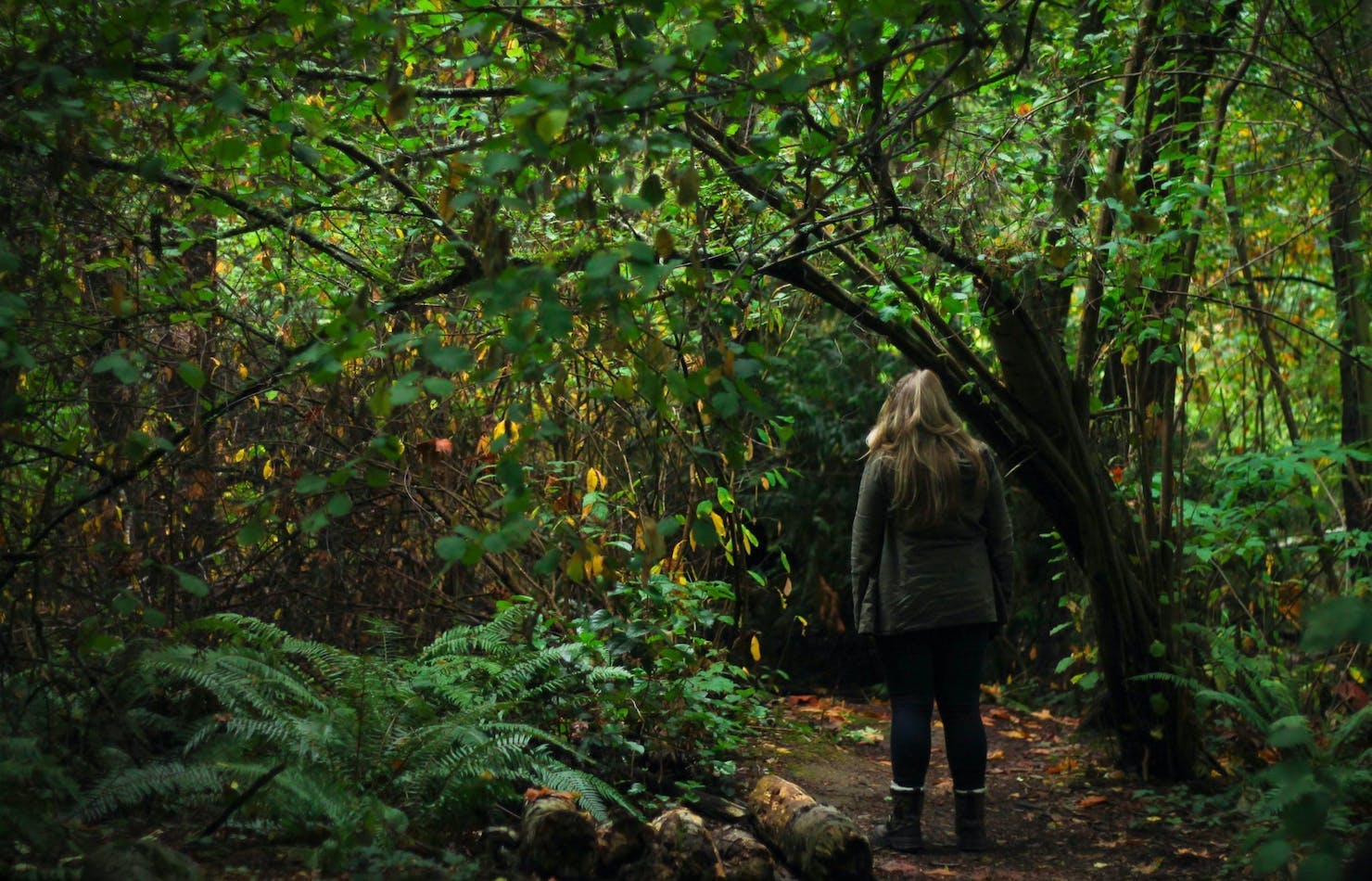
Foraging in the Pacific Northwest
In today’s day and age, foraging is becoming more and more popular and this blog post will be focusing on some of the plants you can forage in the Pacific Northwest.
We will be going over some of the common plant life that you may encounter, where to find it, how to identify it, what nutritional qualities it carries and what it can be used for. We highly encourage you to further research the plants you will be looking for.
Plantlife changes throughout the season and so it only makes sense that we focus on the plants you can find during fall months. These include the following:
- Stinging Nettle
- Chickweed
- Watercress
- Rose Hip
- Hairy Bittercress
Now keep in mind, like any other natural resources, there may be restrictions on harvesting certain berries, plants or mushrooms in different regions, so be sure to check local restrictions either on your provincial government website or municipal bylaws.
Finally, take care when picking to ensure that you are not leaving damage to the area in which you are harvesting from. It’s important that we take care of our natural resources and don’t over pick to allow for future growth and enjoyment by others.
Stinging Nettle
Stinging Nettle, or Urtica Dioica L. as it is scientifically named, is a wild edible potherb that should only be used after it has been cooked.
Stinging Nettle can be found during spring and summer, but also in fall depending on where you live. It grows in places that are damp such as marshes, creeks, lakes, or in places that have a higher than normal rainfall; because of this it grows in abundance in the Pacific Northwest, but also grows in much of North America.
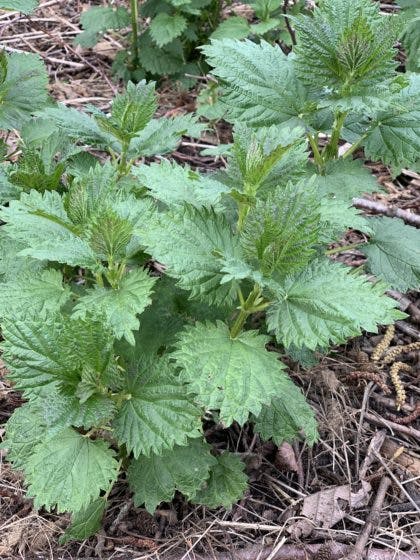
This is because, as you may have guess, Stinging Nettle can sting when touched with bare skin. As such, it is recommenced that you wear protective gloves when harvesting. For those that aren’t looking to use this plant for eating, you may wish to take a read on our other blog post, Plants to Avoid in the Bush.
When attempting to identify this plant, look for the following features:
- Paired leaves which can be egg-shaped or heart-shaped
- Serrated leave edges
- Tiny stinging hairs on the plants surface
- Small green flowers that form clusters, several clusters per plant
- A single straight stem
- Spreading rootstocks which create large patches
- Height between 2 – 8 ft, but commonly between 3 – 4 ft
When harvesting this plant, opt for the young nettles which are more tender and when the plant is between 1 – 1.5 ft tall as it produces a much nicer flavour. The older plants a not so palatable and the stems become too woody to eat. Also be sure to only harvest from the centre and leave the first and last plants within a grove. This allows seeding to occur in the fall and provides future harvesting of the plant.

This plant contains Vitamins A, C and K, Calcium, Magnesium, Potassium, Folate, Iron, Fibre and Serotonin. Due to its nutritional value, it’s great for medicinal uses including:
- Digestion
- Stimulating appetite
- Aid iron deficiency anemia
- Body cleanser
- Antiallergic
- Diuretic
- Antihemorrhage
- Antiheurmatic, and
- Nutritive mineral-rich tonic
Learn how to make Stinging Nettle and Ricotta Tortellini by our very own, Tiffany Bader.
Chickweed
Chickweed, also known as Stellaria Media if using it’s scientific name, is one of the most common weeds that you can find growing in near all parts of the world and during all seasons.
Chickweed is used as a salad green and can be eaten raw, however you should only eat the new leaves or succulent tops of the plant raw. You may also wish to cook the plant to use it as a potherb or in soups. Mouse-ear Chickweed has a hairiness on the leaves and for that reason should always be cooked.
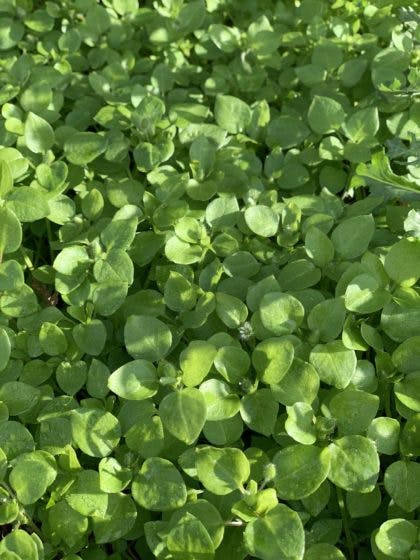
When looking for Chickweed, you’ll want to head to areas with moist, waste soils or gardens. It thrives in areas of soil which have been disturbed. Although you can find Chickweed throughout the year, it’s most plentiful between September – April.
This plant is an easy one to identify and you can do so by looking for the following features:
- Leaves places on stems in equal pairs
- Egg-shaped leaves that form a point
- Small white star-like flowers, found in axils of leaves
- Fine hairs on the leaves around the base of the flower
- Stringy looking
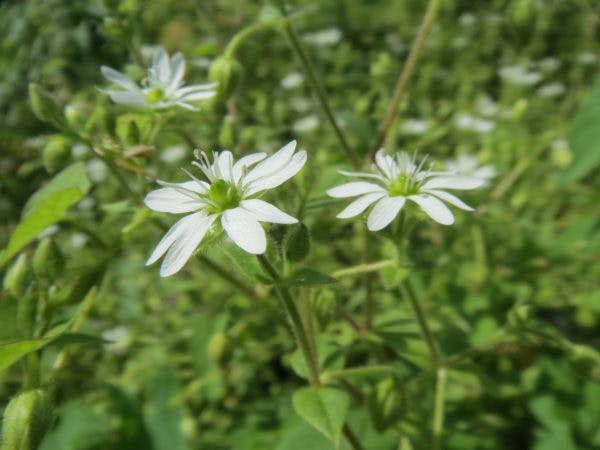
Chickweed is known to have Vitamins A, C, D, Rutin, Folic Acide, Riboflavin, Niacin and Thiamine. It also contains the minerals Calcium, Potassium, Manganese, Zinc, Iron, Sodium, Phosphorus, Copper and Silica.
Given the nutritional qualities of this plant, it can be used for the following medicinal purposes:
- Refrigerant (removes excess heat from the body)
- Demulcent (relieves inflammation or irritation)
- Vulnerary (heal or treat wounds)
- Alterative
- Anti-itch
- Emollient (softens or soothes the skin)
- Mild laxative
- Anti-rheumatic
- Galactagogue (increases lactation in breast-feeding mothers)
If you’d like some ideas on ways to cook this plant up, check out the Chickweed Falafel recipe we put together featured on Anchored Outdoors. We also have 3 other Chickweed recipes you can use very easily, also on Anchored Outdoors here in this blog post.
Watercress
The scientific name for Watercress is Rorippa Nasturtium-Aquaticum and it gives off a pungent and peppery flavour.
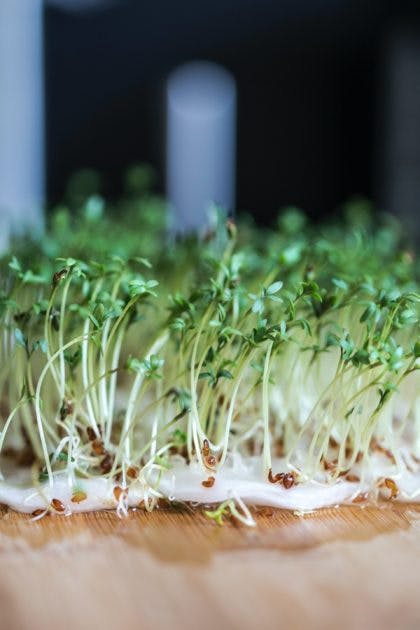
You can find Watercress in slow moving water. Often found in creeks or streams in the Northwest, it will grow with Tiny Duckweed and Water Hemlock (be careful as this is a deadly poisonous plant which can look similar to Watercress during early spring).
This plant is widely used as a salad green and believe it or not, it can be found year round. The stems, leaves and fruit of the Watercress are all edible and can even be dried and used as a substitute seasoning similar to pepper.

Identifying this plant can be done by looking for the following physical features:
- Perennial aquatic or semi-aquatic herbaceous plant
- Trailing stems with only tips erect
- Young leaves with no lateral segments or lobe
- Minute blooms form white cluster, 1-2″ across during summer-fall
- Slender capsule 1″ long summer-fall
Watercress is packed with tons of vitamins and minerals and is known to be used for its detoxifying and body-purifying features. Some of the nutritional benefits which you can find from eating or drinking watercress include Vitamins A and C, as well as Minerals Iron, Calcium, Potassium, Folic Acid, Flavonoids, Sulfur Compounds, Carotenoids, Iodine, Lutein, and Isothiocyanates.
It can be used for the following medicinal purposes:
- Antiseptic expectorant (promotes the secretion of sputum by the air passages, used to treat coughs)
- Remove toxins from the body
- Treat arthritis, gout and rheumatism
- Improve appetite and warm the stomach
- Stimulate the liver and gallbladder function
- For spider bites
- Topical application for eczema
- For skin sports and freckles
- Relief for hemorrhoids
Studies also have indicated that Isothiocyanates in cruciferous vegetables can inhibit cancer development by activating the ability of phase II liver enzymes to detoxify.
Rose Hip
Rose Hip, also known as Rosa Acicularis by its scientific name, is a widespread wild plant which is harvested after the first frost from late August until mid-October. It’s harvested after first frost because the flesh is then able to become soft and will even give more liquid once the fruit is cooked. Don’t wait too long to harvest though as they can become very soft
The identification of a Rose Hip is quite simple, look for a rose bush and the uncut rose stems will form Rose Hips. These will be bulb-like and fleshy. These are typically red, but can have an orange tinge to them, and can also be found purple or black in colour!
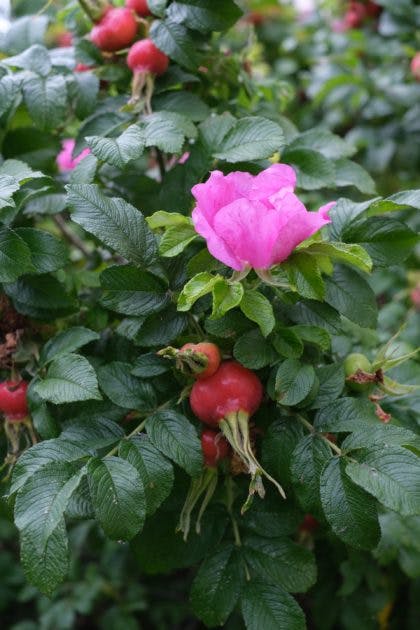
Rose Hips are rich in Vitamin A, C, and E and Minerals like Calcium, Magnesium, Potassium, and Iron. They also contain organic acids, Carotenoids, Flavonoids, and Tannins.
The Rose Hips can be used not only for medicinal purposes, but also for for edible purposes such as the following:
- Syrup
- Decoction
- Jam
- Jelly
- Nutritive food
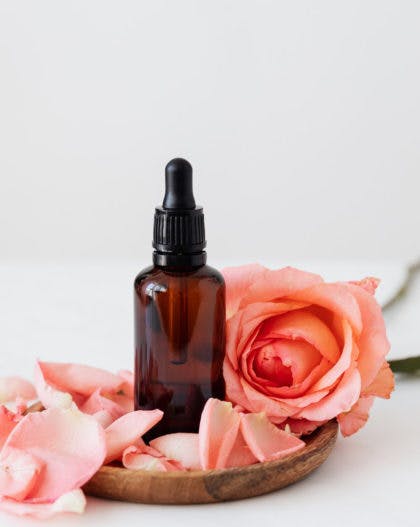
When it comes to using Rose Hips for medicinal reasons, it comes in use for the following ailments:
- Astringent for hemorrhages, ulcers and diarrhea
- For eye inflammation
- To treat sore throat or tonsillitis
- Skin wash for ulcers, open wounds and cuts when prepared as an infusion.
Hairy Bittercress
Hairy Bittercress is known scientifically as Cardamine Hirsuta and is a thinly taprooted (a primary root that grows vertically downward and gives off small lateral roots) annual.
This plant prefers to grow in soils that have been cultivated, but you can also find it near gardens, train tracks, and roadsides. Hairy Bittercress flowers in Spring and Autumn, depending on when seeds have germinated.
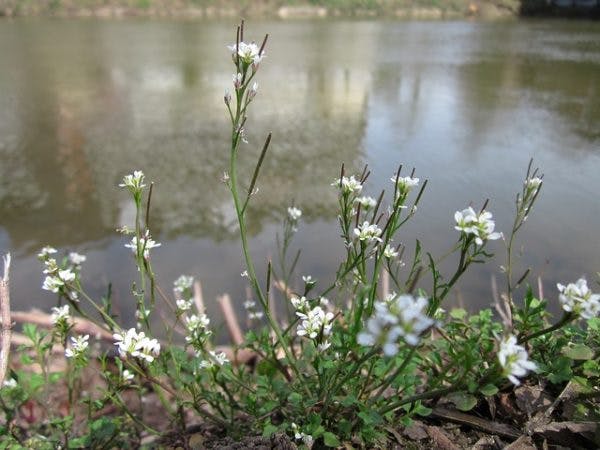
When looking to identify Hairy Bittercress, look for the following physical features:
- 2 – 12 inches in height
- Tiny white flowers in compact racemes
- Upright seed pods that are up to 1 inch long
- Leaves which form a circle at the base of the stem, that all grow a similar length and somewhat resemble a rose (known as a Basal Rosette)
- Leaves that are divided in two or more pairs of opposite facing leaflets
- Few stem leaves are unstalked and reduced in size
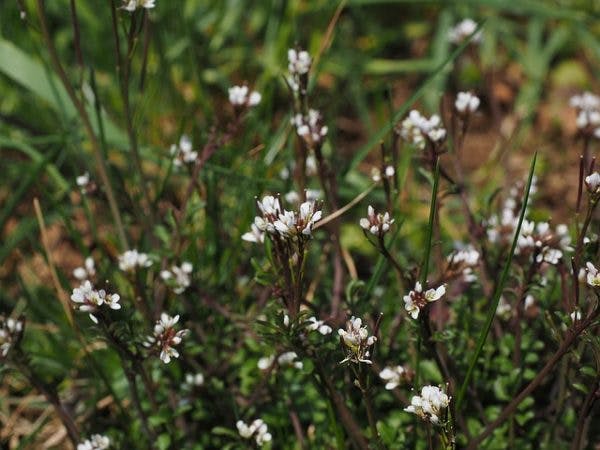
This plant is high in Vitamin C and also has Calcium, Magnesium, Beta-carotene, and antioxidant value.
You can eat the leaves of this plant raw in a salad or cooked and used in a soup, but it is most commonly used for salads. The flowers can also be eaten. While you can put the roots of this plant to use, it would be used for more of a seasoning when grated onto a dish.
Learn how to make Naan bread with foraged Bittercress here.
We hope you enjoyed learning about these common plants that you can find and no matter what plant or berry you plan to forage, remember to know your identifications well and be safe!
Happy foraging.
Corrine Owerko


